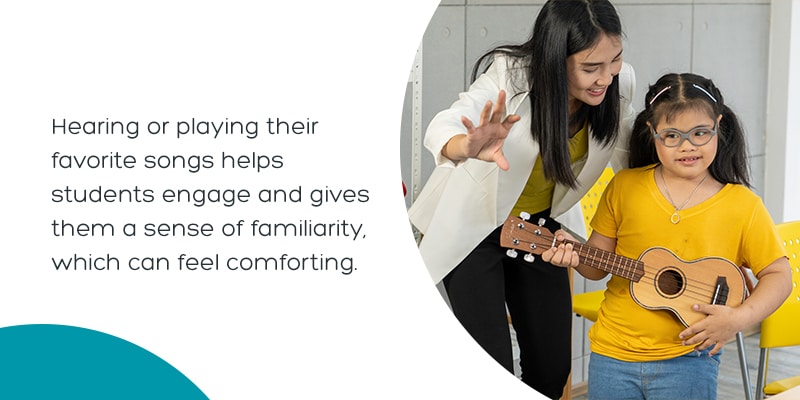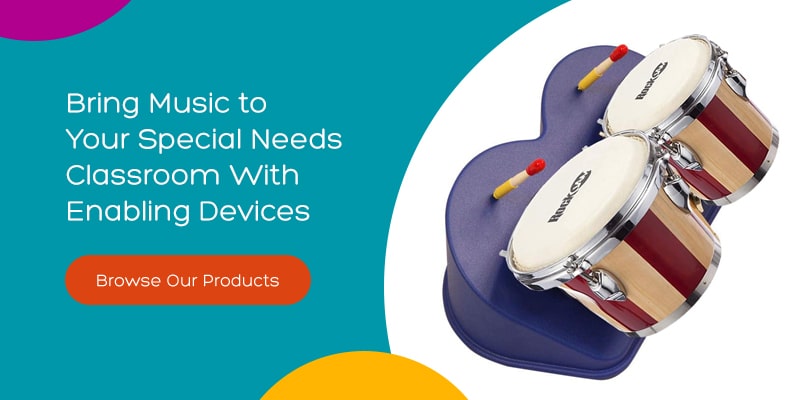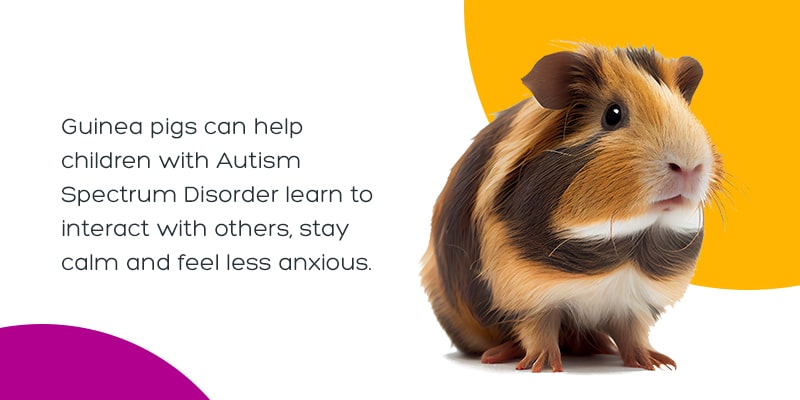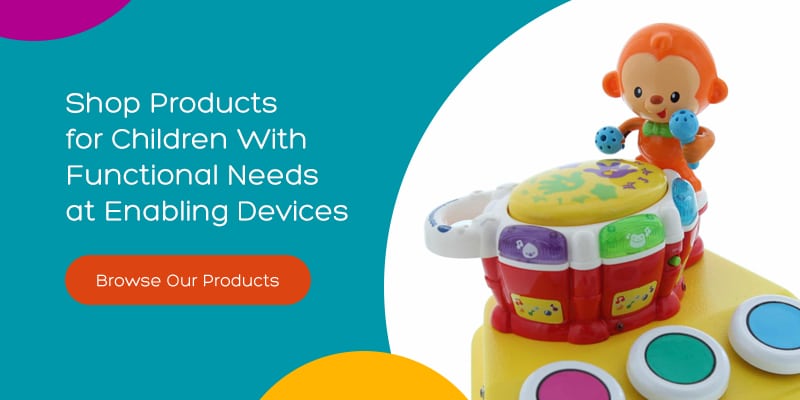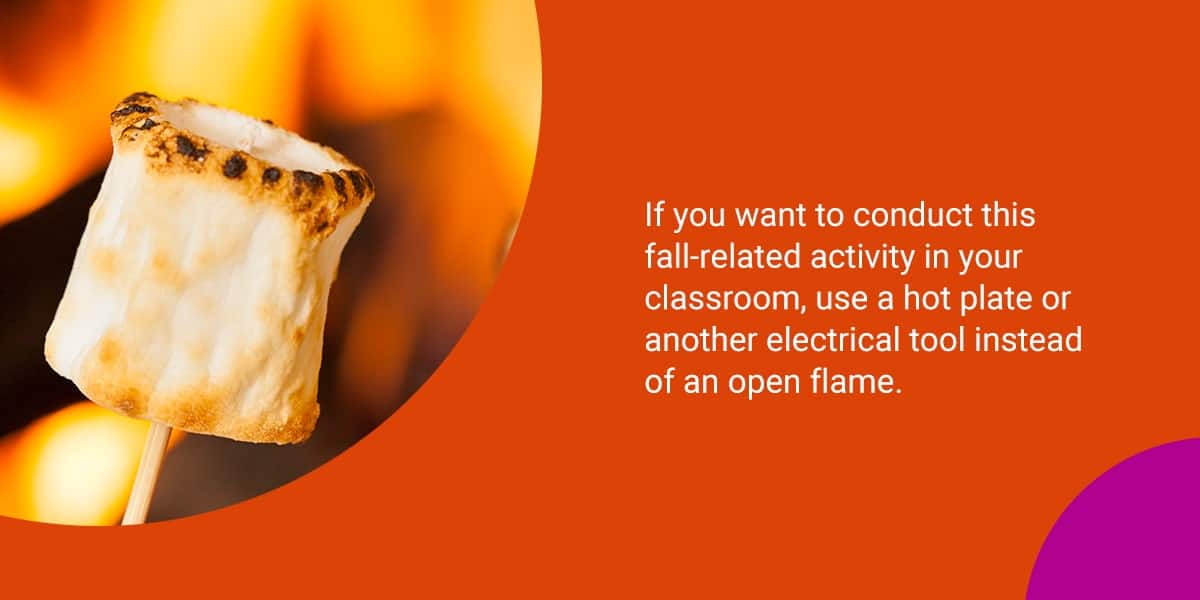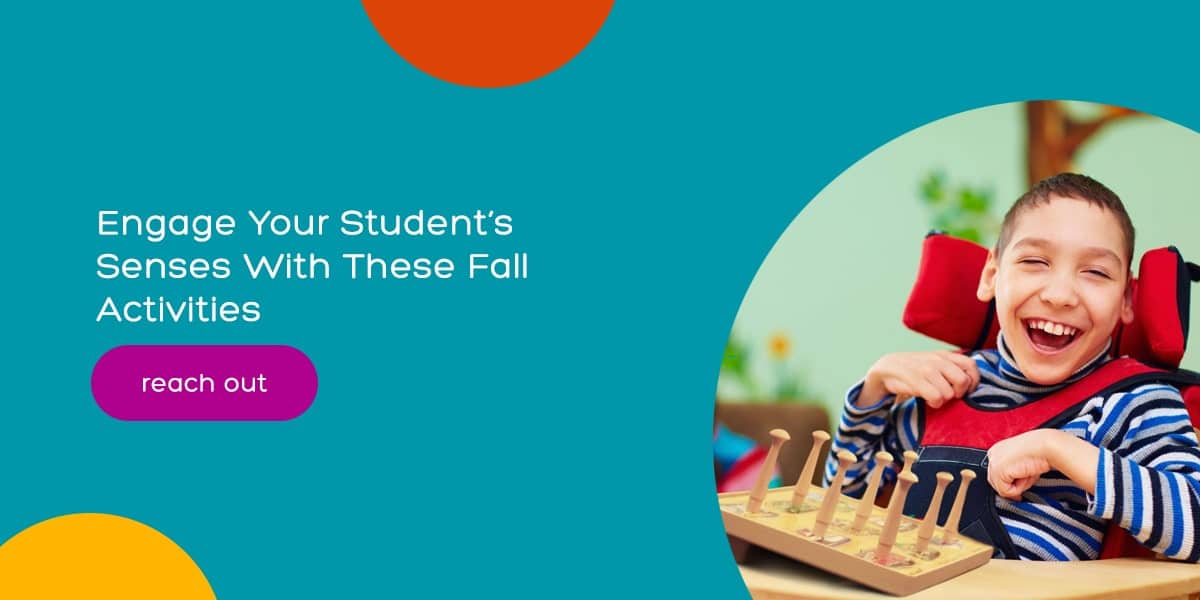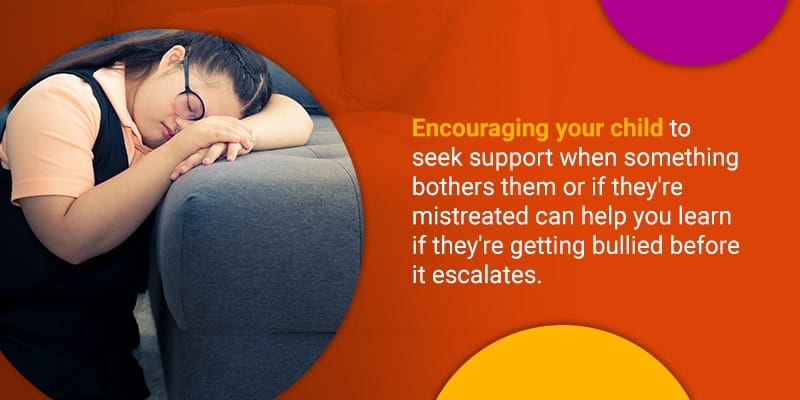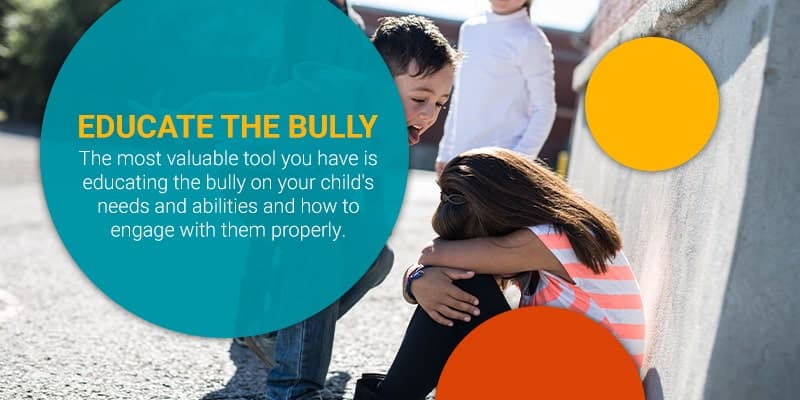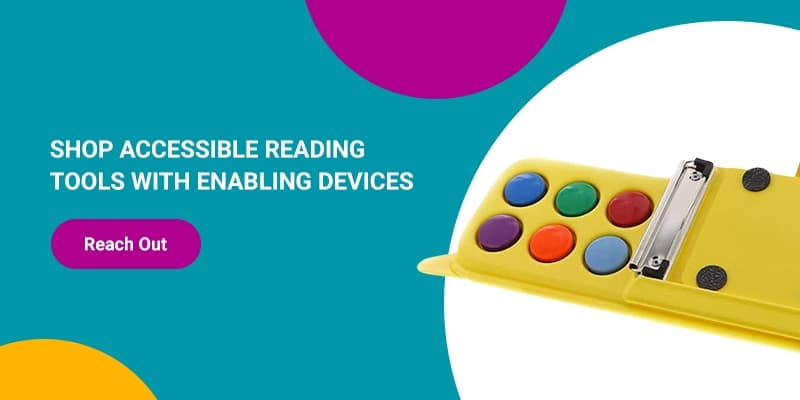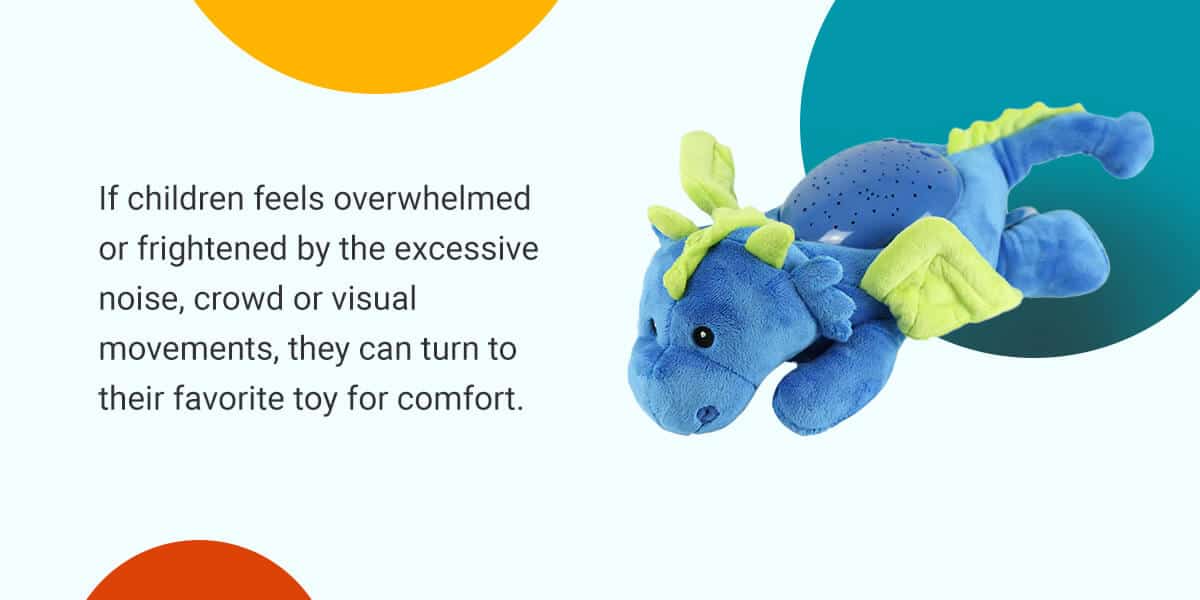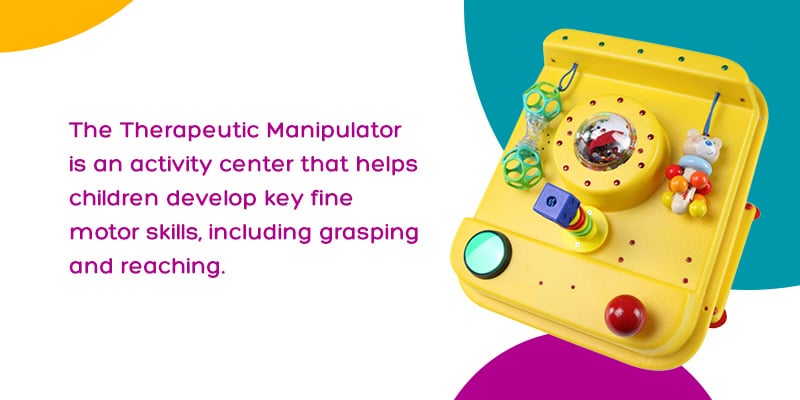What Are Adaptive Switches?
An adaptive switch is an access device that enables individuals with physical, cognitive and movement-limiting disabilities to use technology and electronic devices. Daily tasks like turning knobs can be complex for those with limited or impaired motor skills. Adaptive switches, sometimes called capability switches, offer easier, simplified movement solutions like pressing a button to help users perform these actions. People can use adaptive switches for toys, games, computers, voice-output communication tools and home appliances.
Capability switches for individuals with functional needs (commonly referred to as special needs) provide a user-friendly interface between the person with a disability and a device, toy or other piece of technology. Children and adults can use switches for improved independence and to actively participate at home, school, therapy or in their community.
10 Types of Adaptive Switches
Adaptive switches increase accessibility to many toys and devices by providing various activation options to accommodate all individuals. External capability switches may be categorized by the way they’re used, their unique features, the response required to create the switch action and the kind of assistance they provide.
For example, some activate with gentle pressure applied to a button, while others respond to head movements or small physical gestures such as a twitch of the forehead or the blink of an eye.
Here are the top 10 main categories of adaptive switches.
1. Hand, Finger and Body Switches
Hand, finger and body switches allow people with limited movement to access devices with the slightest movement of a finger, wrist, foot or other part of the body. Some work by gentle squeezing, while others respond to the push of a button.
The joystick is one of the most popular hand switches because it can be mounted on the tip of an armrest and used to activate more than one type of device by moving the joystick in different directions. A single joystick may be used to activate a phone, tablet, TV or an array of Bluetooth-enabled devices, for example.
2. Subtle Movement and Sound-Activated Switches
Wearable switches are ideal for those who need regular assistance communicating, giving feedback or interacting with other objects. Their wearable design keeps them close and convenient, and different devices work with different inputs.
People with movement limitations or poor extremity control have a number of switch choices that fit their abilities.
An individual with gross and fine motor skill issues can still use a movement-based switch that operates with a subtle signal, such as a wrinkling forehead or turn of the wrist. These switches are usually mounted in a position close to the user, such as on a wheelchair mount, or wearable switches, such as a twitch switch or a finger switch that is held in the hand. Some movement sensor switches can detect the most minor movements to enable activation by users with severe physical challenges and limited movement.
Sound-activated switches help people with poor motor control use their voice or any distinct sound to operate the switch. Simply saying “ahhh” can make the switch activate the associated device. Optical switches are activated by eye movement. The switch remains open until the user blinks. When the switch detects the blink, it uses an infrared beam to close the switch and turn the device on.
3. Light, Music and Vibration Switches
Light, music and vibration switches are designed to stimulate and appeal to those who thrive on reward-based engagement or need encouragement to use their adaptive switch. Some devices focus on creating an auditory experience with music or sounds, while others use bright or blinking lights for visual engagement or to make the target easier for those with visual impairment to find.
4. Pillow Switches
Pillow switches have a switch covered in soft, pliable foam encased in a removable bag for easy washing. When the soft surface is pressed, it gives tactile feedback and an audible click. The switch is extremely responsive and can be activated by the head, shoulders, arms or hands, making it a good choice for users with limited movement in their limbs or head. Some pillow switches have mounting versions for wheelchair users with limited dexterity.
5. Plate Switches
Plate switches have a large activation surface suitable for users with motor disabilities who can’t use small buttons and controls on most adapted devices. They usually have a very large button with a very thin top, ergonomically designed to respond to the gentlest touch.
6. Saucer Switches
Saucer switches are ability switches designed specifically for those who are not able to sustain or control the wrist or hand movements required for activating a traditional plate switch. Saucer switches are activated with just a light touch or can be rolled up on, and some can be angled to accommodate varying abilities.
7. Mouth (Sip and Puff) Switches
Mouth (sip and puff) switches are equipped with a mouthpiece that helps the user — typically those with severe physical impairments — issue commands by a sip or a puff. The sip-and-puff design allows the user to control two devices with a single switch. The negative pressure produced by a sip and the positive pressure created by a puff cause the switch to activate the attached devices.
8. Textured Switches
Textured switches are designed with visual and tactile stimulation in mind, featuring elements like raised bumps or lines and stretchy textures. Users with a range of needs can enjoy a somatosensory experience with a textured device.
9. Wheelchair and Bedside Switches
Wheelchair and bedside switches attach to a wheelchair’s armrest or the user’s bed or bedside table. These switches are activated by a variety of movements, including
- A gentle touch of the fingers
- Shoulder movement
- Head movement
- Sound
- Vibration
10. Gumballs and Jumbos
Gumball and Jumbo switches are for individuals with limited motor skills or targeting abilities who need a simpler and more comfortable switch design. Some are used with communication devices, while others provide a somatosensory experience with a tactile design. The wide activation surface responds to gentle touch, while a compatible latch timer can help them accommodate users with uncontrolled body movements.
FAQs About Adaptive Switches
It’s helpful to understand the use cases and differences between switches, switch-adapted devices and switch-activated toys and devices. We’ve answered some of the most common questions that parents and teachers have.
What Can Adaptive Switches Be Used For?
People with limited motor skills can use capability switches to operate a wide variety of toys and devices. Thanks to the switches’ simplistic, user-friendly designs that feature larger targets and sensitive buttons, children and adults can easily access the toy or assistive device they need to perform daily tasks or control their environment.
Examples of uses for adaptive switches include switch-adapted toys, appliances, lights, TVs, computers and learning devices, or independently controlling a wheelchair. Many also use them for initiating speech generation or providing simple feedback for those with speech difficulties.
External capability switches help users develop and build skills, including:
- Swiping, reaching and grasping
- Increased sensory or tactile awareness
- Fine motor skill development
- Increased visual perception
What Are the Benefits of Adaptive Switches?
Adaptive switches help people living with limited movement to enjoy the following benefits:
- Greater independence and improved self-esteem
- Improved communication with caregivers
- Enhanced brain development for children
- Better access to technology and computers
- Ability to use their limited abilities to complete learning tasks
How Do I Choose the Right Capability Switch?
When you need to select an adaptive switch for your family member or student, here are some of the vital factors to consider:
- Actions needed to use the switch: The person using the switch shouldn’t experience strain or fatigue while using it. It should provide a slight challenge to help develop specific skills without being too tricky for them to interact with.
- The part of the body the person will use: Choose a switch that the user will operate with any of their unique abilities. You can find switches that are activated by the head, mouth, chin, hand, finger, wrist or other small muscle movements.
- Range of motion: If the person has a limited range of motion, they’ll be better suited to switches that only require a simple and short movement to activate.
- Amount of force: Can the user sustain consistent pressure on a switch? Some adaptive switches require different amounts of force than others. Individuals who can exert more force will need a more durable switch, while those who can only apply minimum pressure will benefit from a more sensitive switch.
What Is the Difference Between Switch-Activated and Switch-Adapted Toys?
A switch-activated toy is activated using a capability switch. These toys — like the ones we create at Enabling Devices — were originally designed and built with the intention of being activated with a switch.
A switch-adapted toy is an existing toy that is modified so it can be used with capability switches. For example, a toy you might find at the store can be adapted for users with special needs so they can play with and control it.
Why Use Switch-Adapted and Switch-Activated Toys?
Switch-adapted and switch-activated toys provide a more engaging experience for children and adults with disabilities. These toys feature unique switches that enable users to unlock their potential during play and learning. These toys also promote self-sufficiency by reducing the need to ask for help.
With these toys, users can engage with objects they might otherwise not be able to use, helping them practice strengthening their motor abilities like:
- Visual targeting
- Active range of motion
- Eye-hand coordination
Those with limited mobility or coordination may have challenges with standard, off-the-shelf toys. This can make it difficult to feel included in educational, play and community settings. Switch-adapted and switch-activated toys allow users to engage in play, feel included among their peers and participate in more activities. In this way, these toys can help increase commonality and foster positive, can-do attitudes for individuals of all abilities.
How Are Switches Used in Special Education?
Special education teachers can use adaptive switches to make learning easier for students with special needs. Capability switches provide solutions to many communication-, activity- and task-related challenges. Because adaptive switches come in a range of colors, shapes and sizes, teachers can offer different options that appeal to students of all abilities.
For instance, a student who is unable to interact during circle time can use a recordable switch to communicate with their peers and teachers. Capability switches can also teach cause and effect by showing students what happens when they push, touch, or sip and puff on a switch.
How Are Switches Used in Therapy?
Speech-language pathologists (SLPs), occupational therapists and physical therapists can use adaptive switches to supplement the physical and cognitive progression of patients with functional needs.
For example, a physical therapist might provide a thumb switch to help a user improve thumb mobility while operating a certain toy or device. An occupational therapist can use an adjustable adaptive switch with a compatible appliance control remote to help a person activate different devices from a distance to accomplish tasks independently.
Shop Adaptive Switches Online at Enabling Devices
Browse our extensive range of adaptive switches designed to help children and adults use and activate a wide range of devices. We may also be able to adjust some of our switches for specific needs. Contact us today for more details about selecting adaptive switches or check out our comparison chart to find the right adaptive switch.














